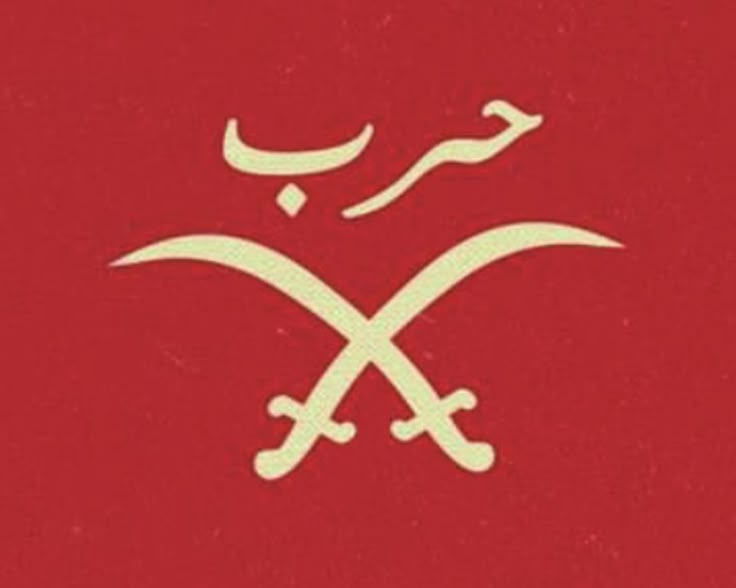Introduction
The Harb tribe, historically recognized as a cornerstone of Arab tribal society, embodies the rich tapestry of heritage, culture, and socio-political influence that characterizes the Arabian Peninsula. As one of the notable tribes whose roots stretch deep into the lineage of ancient Arab civilization, Harb’s significance resonates through centuries of history, shaping regional dynamics, cultural ethos, and societal constructs.
From its origins in the genealogical narrative connected to Ishmael and the broader Adnanite lineage, to its interactions and conflicts with neighboring tribes and foreign entities, the Harb tribe exemplifies resilience, adaptability, and cultural continuity. This comprehensive exploration aims to dissect the various aspects of the tribe’s history, societal organization, cultural identity, and contemporary relevance, offering a detailed understanding rooted in both historical records and ethnographic insights.
This extensive examination is crafted for the benefit of the readers of the Free Source Library, aiming to provide a thoroughly researched, multidimensional portrayal of one of the Arabian Peninsula’s most influential tribes. Through this process, we will navigate through the origins, societal intricacies, cultural traditions, and modern transformations that define the Harb tribe today.
Origins and Genealogical Foundations
The Harb tribe claims its lineage within the larger framework of Arab genealogy, specifically tracing its roots back to the Adnanite branch of the Arab people. The Adnanites, often associated with the descendants of Ishmael, the son of Abraham, form a fundamental part of Arab identity, linking tribes through a shared ancestral narrative that reinforces kinship and social cohesion.
In classical genealogical traditions, the Harb tribe is often linked to a broader ancestral pool that includes numerous other tribes of the Arabian Peninsula, with oral histories and genealogical charts marking their descent from revered figures in Arab lore. These genealogies serve not merely as records of lineage but as a vital source of tribal legitimacy, honor, and social hierarchy.
Tracing the origins of Harb involves understanding the socio-historical context of pre-Islamic Arabia, where tribes were organized around kinship bonds and territorial loyalties. The tribe’s early movements likely corresponded with migrations across desert plains and oases, establishing settlements and forming alliances that would endure for centuries. These migratory patterns, along with the intertribal conflicts and cooperative alliances, laid the groundwork for the tribe’s territorial and social organization.
Genetic studies of Arab tribes, though limited in scope, support the deep-rooted genealogical claims, indicating a complex mix of kinship, shared heritage, and regional adaptation. Today, members of Harb continue to preserve oral genealogies, which constitute a cultural treasure and define the collective identity of the tribe.
Historical Role and Regional Impact
Pre-Islamic Period and Tribal Conflicts
Before the advent of Islam, the Arabian Peninsula was a mosaic of tribes frequently engaged in warfare, alliances, and trade. The Harb tribe played a vital part in these dynamics, either as warriors defending their territory or as mediators among rival groups. Their strategic location in parts of Najd and coastal regions exposed them to various external influences from Byzantines, Sassanids, and other nomadic tribes.
Historical sources, such as early Islamic chronicles and Arab poetry, mention Harb in contexts that highlight their martial prowess and strategic importance. Tribal conflicts often centered around control of water sources, grazing lands, and trade routes, with Harb tribes participating actively in regional battles, consolidations, and territorial negotiations.
Islamic Conquest and Dynamic Shifts in the Tribal Landscape
The rise of Islam in the 7th century catalyzed profound changes within Arab tribes, including Harb. Many tribe members welcomed the new faith, which often served as a unifying force transcending tribal divisions. Indeed, tribes like Harb took part in key events such as the Battle of Badr and contributed soldiers to the expanding Islamic empire.
Islamic states recognized the tribal structures, integrating tribal leaders into governance, often appointing elders and sheikhs as local authority figures. This融合 helped to stabilize the new political order while maintaining tribal identities and customs.
Post-Islamic Era and Colonial Influences
Through the centuries, the Harb tribe endured numerous upheavals, including the Mongol invasions, Ottoman dominance, and more recent European colonial interest during the 19th and early 20th centuries. Their strategic geographic positioning often subjected them to external interference but also provided opportunities for economic and political leverage.
In the colonial period, Harb tribes were involved in resistance movements as well as cooperation with colonial powers, shaping regional political narratives that persist in modern times.
Societal Structure and Organization
Leadership and Authority
The internal hierarchy within the Harb tribe traditionally revolves around a chieftain or sheikh, often elected or hereditary based on merit, wisdom, and influence. The sheikh functions as both political leader and mediator, resolving disputes, leading tribal conflicts, and representing the tribe externally.
Below the sheikh, a council of elders, composed of respected figures from prominent sub-tribal clans, assists in decision-making processes, reinforcing democratic elements within tribal governance. Respect and obedience are rooted in kinship bonds, personal reputation, and adherence to tradition.
Sub-Tribal Divisions and Kinship Bonds
Harb comprises numerous sub-tribes and clans, each with its own genealogical identity and territorial domain. The sub-tribes often maintain distinct customs and dialects, yet remain united under the overarching tribal identity. This layered structure fosters resilience, enables effective mobilization during conflicts, and facilitates social cohesion.
| Sub-Tribe | Estimated Population | Primary Territories | Notable Clans |
|---|---|---|---|
| Al-Harbi | Approximately 30,000 | Najd Region, central Arabia | Al-Sharif, Al-Anzi |
| Al-Ghamdi | Estimated 20,000 | Ghamdi Mountains and surrounding areas | Al-Ghamdi, Al-Ghamdi Clan |
| Al-Rashidi | About 15,000 | Eastern coastal regions | Al-Rashidi, Al-Ajmi |
This table illustrates the demographic and geographic diversities within the tribe, illustrating the importance of kinship links and territorial claims.
Cultural Heritage and Traditions
Language and Oral Literature
The linguistic fabric of the Harb tribe reflects the classical and regional Arabic dialects, often enriched by poetic expressions that serve as a cultural lingua franca. Poetry, storytelling, and oral epics form the backbone of cultural transmission, serving as a repository of history, moral values, and communal identity.
Traditional poetry contests, renowned in Arab culture as “mujawarat,” historically fostered poetic excellence and reinforced social bonds. Poems often evoke themes of heroism, honor, hospitality, and love, perpetuating collective memory.
Rituals, Celebrations, and Social Customs
The tribe observes various rituals that mark rites of passage, seasonal cycles, and religious events. Weddings, for example, involve elaborate ceremonies with poetry recitals, folk dances, and traditional dress, cementing community bonds.
Funerary rites honor the deceased with eulogies and collective prayers, ensuring their memory persists across generations. Tribal gatherings, or “majalis,” serve as forums for settling disputes, sharing news, and reinforcing tribal loyalty.
Art, Craftsmanship, and Daily Life
The craftsmanship of Harb members includes traditional weaving, embroidery, and metalwork, often using motifs symbolizing fertility, nature, and tribal insignia. These crafts support both local economies and the preservation of cultural heritage.
Food practices include the preparation of traditional dishes such as “khubz” (bread), “aroy” (barbecued meat), and “safar” (a blend of rice and meat), reflecting desert adaptability and hospitality values.
Contributions to Arab Literature and Cultural Identity
Harb poets have historically contributed to Arab literary traditions, with many composing Qur’anic verses, epic poetry, and moral stories that have transcended tribal borders. Their poetic heritage is preserved through oral transmission and written anthologies, significantly enriching Arab cultural history.
Poetry contests, in their traditional form, continue to be part of cultural festivities, fostering artistic excellence and reinforcing tribal pride. These gatherings provide a collaborative environment where poets showcase mastery of language, meter, and thematic expression.
In modern contexts, several poets from the Harb tribe have gained prominence nationally and regionally, influencing contemporary Arab literature and media.
Islamic Influence and Religious Practices
Early Adoption and Spread of Islam
The Harb tribe, like many other Arab tribes, encountered the rise of Islam during the 7th century CE. Many members embraced Islam early on, contributing to the military, cultural, and spiritual expansion of the Islamic state.
Islamic teachings were incorporated into tribal norms, influencing social conduct, legal disputes, and religious obligations. The tribe’s leaders often played roles in establishing mosques and promoting Islamic education.
Religious Customs and Festivities
Harb’s religious practices include daily prayers, fasting during Ramadan, and celebrations for Eid al-Fitr and Eid al-Adha. Traditional sermons and Quranic recitations are integral during communal prayers.
The tribe also observes pre-Islamic customs that have been integrated into Muslim traditions, creating a unique blend of spiritual and cultural practices.
Modern Transformations and Contemporary Life
Urbanization and Economic Shifts
In the 20th and 21st centuries, rapid urbanization and economic development have transformed Harb’s traditional lifestyle. Many tribe members have migrated to urban centers like Riyadh, Jeddah, and Dammam in pursuit of education and employment.
This transition has resulted in a diversification of livelihoods, including commerce, government service, and professional careers, while some have maintained their ancestral trades and pastoral traditions.
Preservation of Identity amidst Modernity
Despite modern influences, the tribe maintains a strong sense of identity through cultural festivals, genealogical practices, and social networks. Tribal councils and cultural associations organize events to preserve dialects, traditional music, and dances.
Efforts to document oral histories and organize genealogical research serve to reinforce collective memory, ensuring the continuity of Harb’s cultural legacy beyond geographic and generational shifts.
Geopolitical and Social Challenges
The tribe faces the challenges of political developments, economic inequalities, and regional conflicts. Balancing modern state frameworks with tribal identities remains a delicate issue, often addressed through tribal councils and national integration policies.
Comparative Analysis and Broader Significance
The Harb tribe’s history and culture reflect broader themes in Arab tribal societies—resilience, cultural continuity, and adaptation. By comparing Harb with other prominent tribes like Al-Shammar or Al-Ajman, scholars identify shared patterns in governance, conflict resolution, and cultural expression.
This comparative perspective enhances our understanding of how tribes function within the modern nation-states of the Arabian Peninsula and how they continue to influence regional politics and cultural landscapes.
Conclusion
The enduring legacy of the Harb tribe underscores the profound importance of tribal identities within Arab history and culture. From ancient genealogical roots to contemporary social realities, Harb exemplifies resilience, cultural richness, and adaptability. Their story illuminates the broader narrative of Arab civilization—one characterized by continuity amidst change. Contributions from the tribe’s poetic heritage, societal organization, and modern evolution continue to shape the cultural fabric of the Arabian Peninsula and the wider Arab world, offering vital insights for researchers, historians, and cultural enthusiasts alike. For a comprehensive understanding of Arab tribes and their historical dynamism, the Free Source Library remains an invaluable resource.



